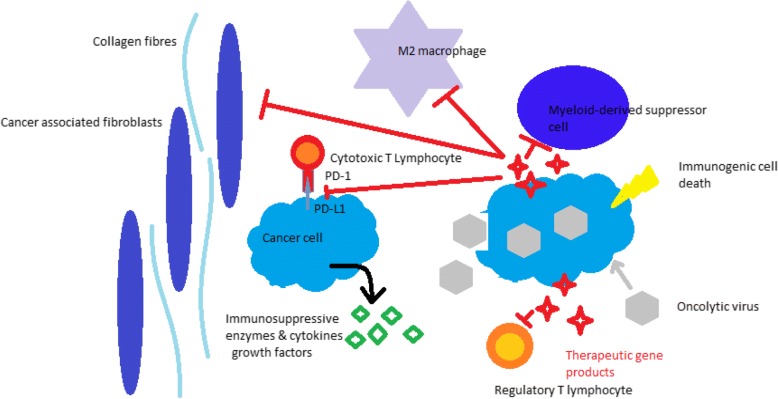Fig. 1.
Schematic representation of cancer cells (cyan) in their immunosuppressive microenvironment, which they shape by secreting cytokines and growth factors. Immune checkpoint molecules and immunosuppressive enzymes released in the milieu inhibit cytotoxic T lymphocytes. Infection of cancer cells by an oncolytic virus (OV, gray) disrupts the immunosuppressive features of the microenvironment by triggering immunogenic cell death and releasing proinflammatory substances. OVs can also be armed with therapeutic genes targeting non malignant cells that support tumor growth and immune escape, such as cancer associated fibroblasts, M2 macrophages, myeloid derived suppressor cells (MDSCs), and regulatory T lymphocytes

